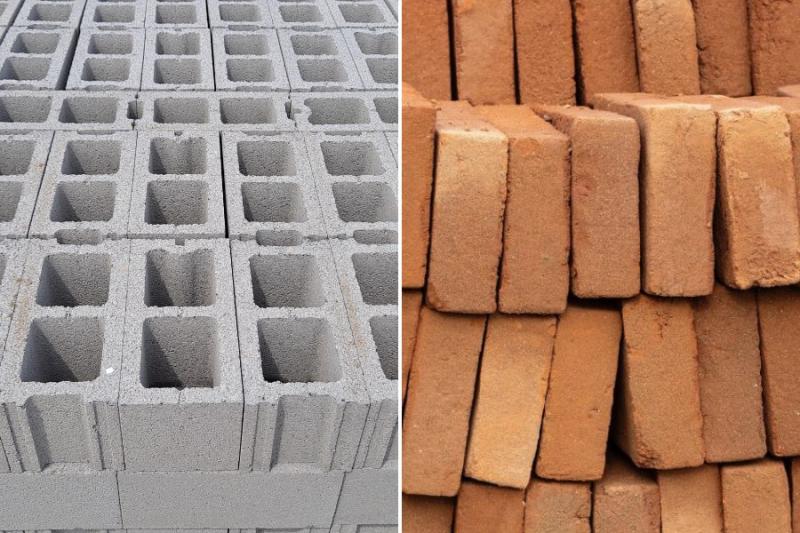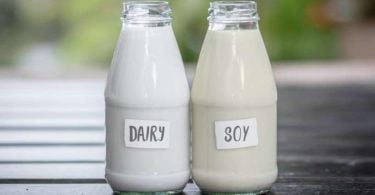Blocks and bricks are both building materials, but they are made of different things and are used in different ways. Blocks, usually made of concrete or aerated concrete, are bigger and last longer. They also insulate better and are stronger structurally. They are often used in building projects as load-bearing walls and foundations. On the other hand, bricks are smaller and mostly made of clay or shale that has been fired in a kiln to make it strong and hard. Bricks look nice and are perfect for walls or facades that don’t have to hold weight. Both materials are important parts of buildings, but they are different in size, shape, and how they are used in the construction industry.
What is a Block?
A block is a rectangular, solid piece of building material used to build walls, foundations, and dividers. Blocks, which are often manufactured from concrete or aerated concrete, are available in various sizes and densities, allowing for various applications. Using cement, sand, and aggregates, concrete blocks offer exceptional durability, strength, and insulation. In contrast, aerated concrete blocks are produced by adding an expanding agent, such as aluminium powder, to a cement mixture, resulting in a lightweight, porous material with improved thermal insulation and fire resistance.
Blocks are advantageous in construction due to their load-bearing capability, which allows them to carry significant weight and makes them suitable for building structural walls or foundations. In addition, their bigger size compared to bricks enables faster and more efficient building. However, blocks typically require plastering or cladding to improve their aesthetic look. In conclusion, blocks are an indispensable building element in the construction sector, renowned for their strength, sturdiness, and adaptability. In addition to playing a vital function in the construction of load-bearing walls and foundations, they also provide insulation and fire resistance.
What is a Brick?
Bricks are small, rectangular building materials produced primarily of clay or shale and are widely used to construct walls, facades, and other constructions. The manufacturing process comprises forming the raw material into the proper shape and size, followed by kiln-firing it at high temperatures to produce a strong, hard, and durable material. Bricks are available in numerous hues, textures, and dimensions, allowing for various design options and aesthetic appeal.
Bricks are renowned for their superior compressive strength, resilience to the elements, and low maintenance requirements. They are typically used for non-load-bearing walls and ornamental purposes. With the correct reinforcing, they can also be utilised in load-bearing applications. Moreover, bricks provide excellent sound insulation and modest thermal insulation.
Bricks’ environmental sustainability is one of their primary advantages. They are created from natural materials, have a lengthy lifespan, and may be recycled or repurposed when they reach the end of their usefulness. Yet, their smaller size makes bricks take longer to lay than blocks. Bricks are flexible, durable, and aesthetically pleasing building materials utilised for various uses in construction projects, such as walls, facades, and other buildings. They provide durability, weather resistance, and strength, making them an industry favourite.
Difference Between Blocks and Bricks
Blocks are typically utilised for load-bearing walls and foundations due to their bigger size and greater durability compared to other building materials. They’re superior in terms of insulation and durability. Bricks are a type of masonry unit often manufactured from clay or shale and baked in a kiln to harden and improve their appearance. Size, material, and intended use are where blocks and bricks diverge most sharply from one another.
Composition
Bricks are often constructed from clay or shale, while blocks are typically made from concrete or aerated concrete.
Manufacturing Process
Bricks are manufactured by moulding clay or shale and heating it in a kiln at high temperatures, whereas blocks are made by mixing cement, sand, and aggregates.
Size
Since blocks are larger than bricks, construction time is reduced, and fewer blocks are needed to cover the same surface area in a wall.
Weight
The overall weight of a building can be reduced by using blocks instead of bricks, especially if the blocks are made of aerated concrete.
Load-bearing Capacity
Bricks are typically used for non-load-bearing walls, while blocks are utilised for structural walls and foundations due to their superior load-bearing capability.
Insulation
In terms of both thermal and acoustic insulation, blocks tend to be superior to bricks.
Aesthetics
Compared to blocks, bricks are more visually appealing since they come in a wider variety of colours, textures, and sizes.
Finishing
Bricks can be left uncovered for a natural look, but blocks typically need to be plastered or coated to look good.
Environmental Impact
Bricks are more eco-friendly than concrete blocks because of their natural components, extended lifespan, and recyclable nature.
Fire Resistance
Aerated concrete blocks do far better than bricks, which offer only moderate fire protection.
Application
Bricks are utilised for non-load-bearing buildings, facades, and aesthetic purposes, while blocks are used for weight-bearing walls and foundations.






